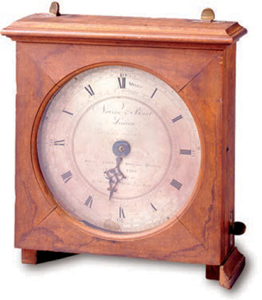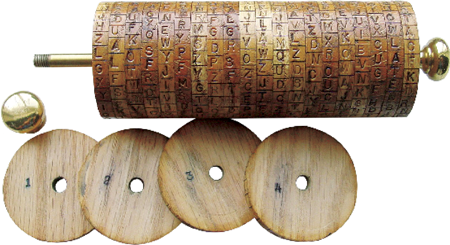
VIRGINIA TECHIE
Jefferson was a technovore, gathering an array of gadgets and even inventing a few: “I have been drawn by the history of the times from physical and mathematical sciences, which were my passion, to those of politics and government towards which I had naturally no inclination”

Called by Jefferson “the finest invention of the present age,” the polygraph was used to make simultaneous duplicates of his letters as he wrote them. He kept the copies at Monticello, organized alphabetically and chronologically

This odometer, mounted on Jefferson’s carriage, calculated the miles traversed on his many trips between the capital and Monticello. It indicated the shortest routes and satisfied his passion for measurement

The camera obscura, a precursor to the photographic camera, was used by Jefferson’s daughter as an aid to drawing. It projected an inverted image onto a mirror, which then reflected and upright-reversed it onto a glass viewing plate

Jefferson would carry these reusable ivory tabs in his pocket, making notes in pencil and later erasing them after copying the information into notebooks

A political critic wrote of Jefferson’s unique revolving chair: “Who has not heard from the Secretary of the praises of his wonderful Whirlgig Chair, which had the miraculous quality of allowing the person seated in it to turn his head without moving his tail?”

The perspective glass, the 18th century version of a travel slide show, gave users an enlarged view of special prints or maps placed on a table below the device

Jefferson used this theodolite, which measured both horizontal and vertical angles, to survey the location, landscapes and elevations of Monticello and the surrounding countryside

The portable orrery, a moving model of the solar system, demonstrated the motion of the planets and their satellites. It modeled the rational order of the universe described by Newton and other scientists of the Enlightenment, the 18th century intellectual movement that inspired Jefferson and fueled a captivation with science. Jefferson and other Enlightenment thinkers believed that knowledge was power and that human reason could be applied to improve the condition of mankind

This achromatic telescope was one of several Jefferson owned to pursue his passion for astronomy, which he viewed as one of the sciences that “no inquisitive mind will be content to be ignorant of”

Jefferson kept this small portable magnifier close at hand to view and classify the botanical specimens he encountered in his travels
Jefferson’s Designs

While Secretary of State under Washington, Jefferson invented this wheel cipher for transmitting secret messages. To decode them, the sender’s and receiver’s wheels had to be set to the same predefined sequence

In 1776 Thomas Jefferson wrote the Declaration of Independence on this portable lap desk of his own design

The dual-faced Great Clock of Monticello was mounted in the Entrance Hall, its second face on the house’s east front to serve both the residents of the house and workers in the field

This revolving book stand, which Jefferson had made in the joinery on Mulberry Row at Monticello, expanded to hold five books open at adjustable angles, allowing him to consult multiple works at once
Source: The Thomas Jefferson Foundation at Monticello (Monticello.org)